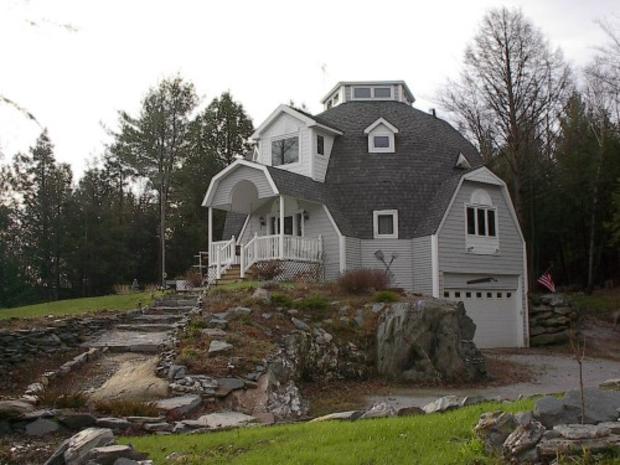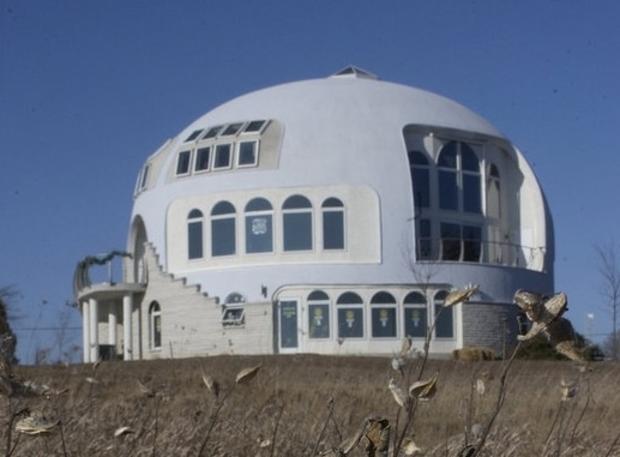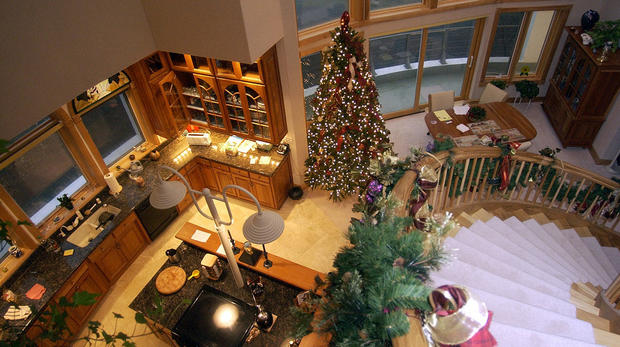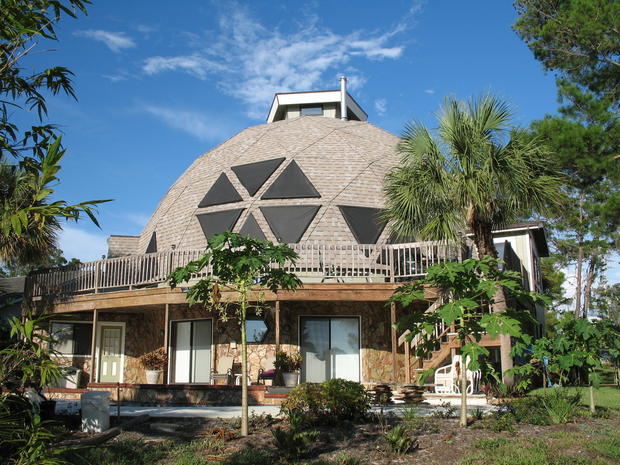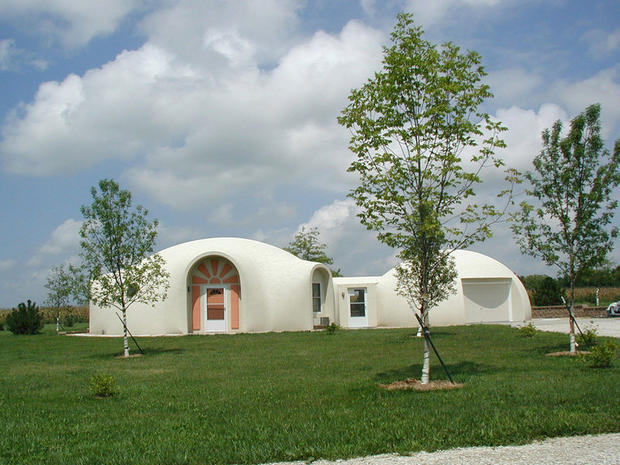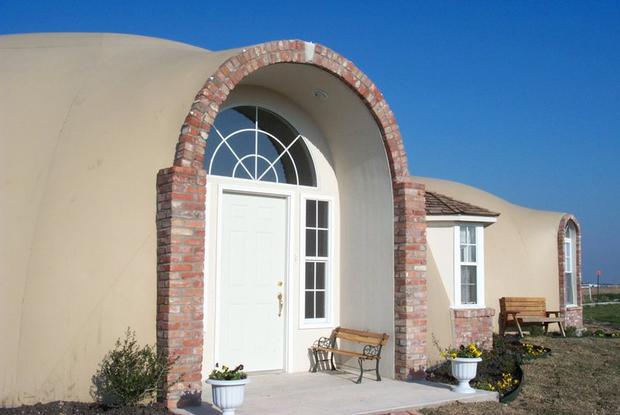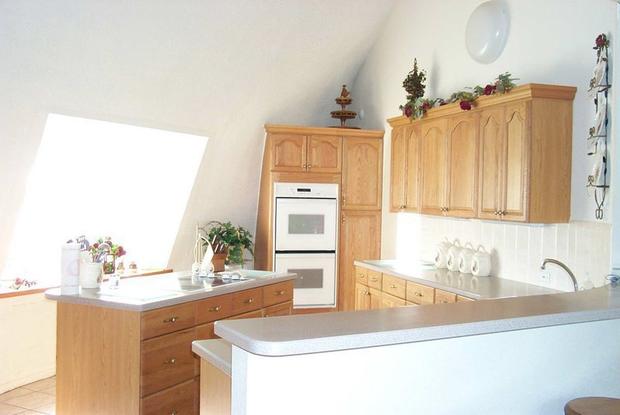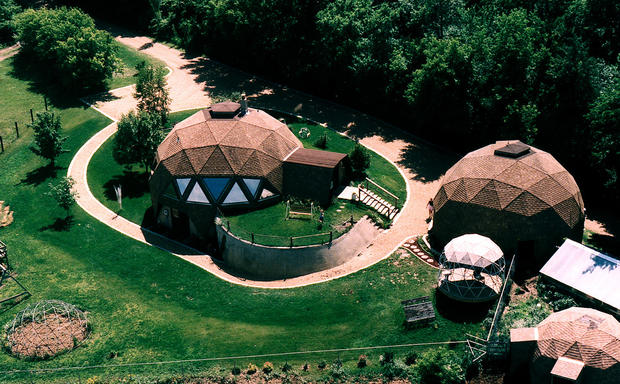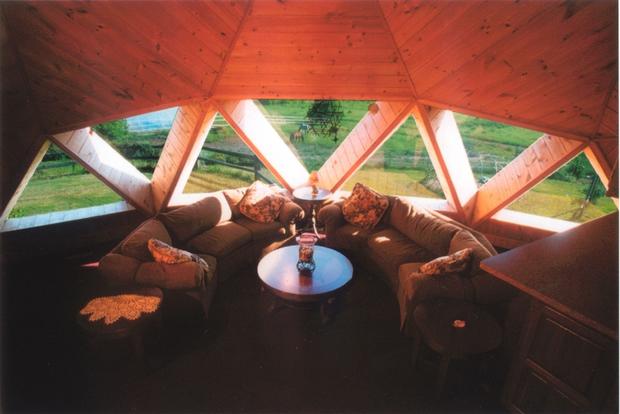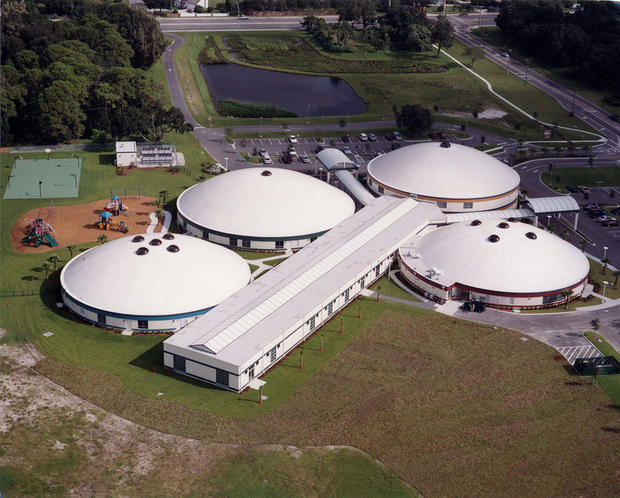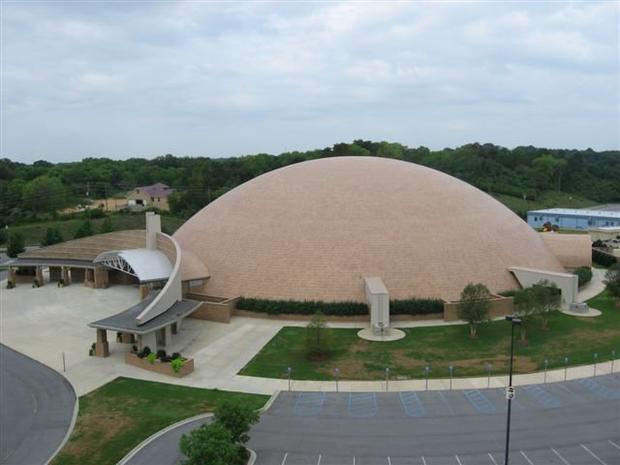Are dome homes the next big thing?
Look at most any home in America and they all have at least one thing in common: Four walls.
There is, however, a growing sector of housing that bucks this most basic structural element -- the dome home.
The dome's shape and inherent structural integrity make it both stronger and more energy-efficient than a typical family home. Domes can withstand powerful winds and strong earthquakes. Concrete domes have been known to survive flying debris as big as cars and direct hits from bombs.
"They are practically indestructible," said Johnny Delirious, spokesman for Monolithic Dome Institute in Texas, a company that has been building the domes for nearly 50 years. "Anyone who wants one wants it for the protection first."
Concrete monolithic domes are the safest of the dome homes. Built out of concrete over an air form, these homes can look as simple as a bubble over the earth or as complex as a luxury mansion with a curved roof.
The Federal Emergency Management Agency rates them as having "near-absolute protection" from F5 tornadoes and Category 5 hurricanes. They have withstood wildfires in Arizona and California and survived direct hits from Hurricane Katrina and tornadoes in Oklahoma and Texas.
Geodesic domes, made by assembling triangular building materials, are similarly protective but with so many seams don't have the exact same strength as their cement counterparts. They are just as energy-efficient, offering owners savings of around 50 percent, said Blair Wolfram, general manager of Dome Incorporated in Minnesota, a company that builds domes.
"What attracted me to the geodesic dome is that it is simply the most energy-efficient home you can build," he said.
Wolfram, like Monolithic owner David South, was inspired by prolific architect Buckminster Fuller, who first popularized the geodesic dome in the 1940s and 1950s and inspired the most well-known geo-dome, the Spaceship Earth dome at Disney World. Advocates of Buckminster's idea went on to build their own dome homes before selling the concept to the public.
The buildings are economical, costing about $120 to $150 per square foot, which is in line with the cost to build an average house, though their builders say they would cost less if they were mass-produced like the average home.
"The problem with the unusualness of the dome is all the custom work that goes into it," Wolfram said.
The custom parts and custom work drives up their cost. Besides that, domes simply don't look like the home most Americans dream about.
The dome home is an oddity and despite the great strides the industry has made in mixing in common architectural elements to smooth out the dome's unique look, there is no hiding the distinct look of a curved building that the eye thinks should be square.
"The construction industry is like the fashion industry, they want things to follow trends," Delirious said. "Neighborhoods have homes looking a certain way and that's what we want. We don't want neighborhoods to drop in value by building something 'weird' like a dome."
Getting financing for a home like this, as well as pricing it for resale, can be difficult.
"The comparable sale is the problem," Wolfram said. "You don't want to get pigeonholed into a category of housing, so I tell people to list it as a custom home."
The homes attract a group that's willing to stretch their imaginations as to what a home looks like, and that means that those with dome homes have a niche audience to sell to. That may be one of the reasons that builders are mostly seeing people buying them as second homes that they intend to live in throughout their lives, and can typically finance themselves.
Despite the limitations, both companies have seen steady growth.
"This is the home of the future," Wolfram said.
A disappearing dome in Wisconsin
Inside the disappearing dome
A geodesic dome in Florida
A retirement dome in Missouri
A dome down in Texas
Inside the Texas dome
A geodesic dome lover's home in Minnesota
Wolfram built his geodesic dome home in 1983 and has since added a number of different domes on the property in Minnesota, along the banks of the Mississippi River.
Inside Wolfram's Minnesota dome
Bishop Nevins School in Florida
Faith Chapel Christian Center in Alabama
The largest church Monolithic ever built, and the largest known Monolithic dome, is Faith Chapel Christian Center in Birmingham, Ala.
